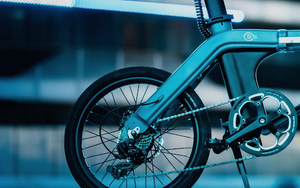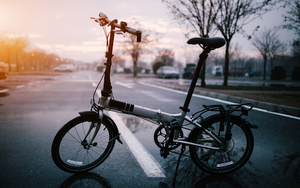Are Electric Bikes Easier to Balance?
Oct 14, 2024
Are Electric Bikes Easier to Balance?
Electric bikes have gained popularity in recent years as an alternative mode of transportation. With their battery-powered assistance, they have made cycling more accessible to a wider range of individuals. One common question that arises when considering electric bikes is whether they are easier to balance compared to traditional bikes. In this article, we will delve into the mechanics of electric bikes, compare their balance with traditional bikes, explore the science behind balancing on two wheels, discuss safety considerations for electric bike riders, and debunk some common myths surrounding electric bikes and balance.
Understanding the Mechanics of Electric Bikes
Before diving into the discussion of balance, it is important to understand the basic mechanics of electric bikes. Electric bikes, commonly known as e-bikes, are equipped with an electric motor that assists the rider's pedalling. This motor is powered by a rechargeable battery, which provides the necessary energy to propel the bike forward. The level of assistance can be adjusted, allowing riders to choose the amount of electric power they want to use. Electric bikes are proving ever popular, with the global market expected to reach around 77.3 million electric bikes by 2030.
Now, let's explore how weight distribution plays a role in balancing an electric bike.
The Role of Weight Distribution in Balancing
Weight distribution is crucial for maintaining balance while riding any type of bicycle, including electric bikes. On an electric bike, the battery and motor are typically located near the centre of the frame, which helps to distribute the weight more evenly. This can contribute to a more stable ride by keeping the bike's centre of gravity closer to the ground.
In addition, modern electric bikes are designed with advancements in frame and component technology that further enhance stability. These advancements include improved frame geometry, suspension systems, and wider tires, all aimed at providing better balance and control.
Impact of Speed on Stability
Speed is another factor that affects the stability of electric bikes. At lower speeds, the motor assistance can help riders maintain balance by providing a steady and controlled propulsion. However, as the speed increases (some electric bikes such as the Hidoes B6 can reach 50 km/hr), the rider's ability to maintain balance becomes more crucial. It is essential to maintain proper posture and technique to ensure stability, especially when cornering or navigating uneven surfaces.

Comparing Balance Between Electric Bikes & Traditional Bikes
Now, let's compare the balance of electric bikes with that of traditional bikes. There are a few key factors to consider when evaluating balance differences.
The Influence of Motor and Battery Placement
The placement of the motor and battery in electric bikes can have an impact on balance. As mentioned earlier, most electric bikes have these components positioned near the centre of the frame, which helps maintain balance by keeping the weight evenly distributed. Traditional bikes, on the other hand, do not have the added weight of a motor and battery, thus potentially making them slightly easier to balance for some riders.
Differences in Riding Techniques
Riding techniques can also vary between electric bikes and traditional bikes. Electric bikes, with their motor assistance, allow riders to rely less on their own physical power, making it easier for individuals with less cycling experience to maintain balance. Traditional bikes, on the other hand, require riders to rely solely on their own pedalling and balance skills. These differences in riding techniques can impact the perceived ease of balance.

The Science Behind Balancing on Two Wheels
To truly understand the concept of balance on two wheels, we need to consider the physics behind it. Balancing a bike involves a combination of forces, including gravity, centrifugal force, and the gyroscopic effect of the spinning wheels. These forces work together to keep the bike upright and stable.
The Physics of Bicycle Stability
The stability of a bicycle is dependent on the location of its centre of gravity, which ideally should be directly above the area where the tires make contact with the ground. The rider's body position, weight distribution, and steering inputs all influence the centre of gravity and the resulting balance.
How Electric Assistance Affects Balance
The electric assistance provided by e-bikes does not significantly alter the basic principles of balance on two wheels. However, the motor's assistance can help riders maintain stability by providing a consistent propulsion and reducing the need for sudden and forceful pedalling inputs. This can be especially beneficial for individuals who may struggle to maintain balance due to physical limitations or lack of cycling experience.

Safety Considerations for Electric Bike Riders
While electric bikes offer many benefits, it is important to prioritise safety when riding them. Here are some key considerations:
Importance of Proper Posture & Handling
Maintaining the correct posture and adopting proper handling techniques are crucial for balance on any bike, including electric bikes. Riders should keep their back straight, shoulders relaxed, and hands positioned securely on the handlebars. A relaxed and balanced body position helps absorb vibrations and promotes stability.
Tips for Safe Riding on Electric Bikes
Here are some additional tips to ensure safe riding on electric bikes:
- Always wear a properly fitted helmet to protect your head in case of accidents.
- Observe traffic rules and regulations, and be aware of your surroundings.
- Start with lower assistance levels and gradually increase as you gain confidence and experience.
- Practice braking techniques to ensure smooth and controlled stops.
- Regularly check and maintain the brakes, tires, and other essential components of your electric bike for optimum performance.

Debunking Myths About Electric Bikes and Balance
Now, let's address some common misconceptions surrounding electric bikes and balance.
Common Misconceptions About Electric Bikes
One common misconception is that electric bikes are just motorised scooters and do not require any balance. In reality, electric bikes require the rider to maintain balance, just like traditional bikes. The motor assistance simply makes pedalling easier, but it does not eliminate the need for balance skills.
The Truth About Electric Bikes and Ease of Balance
While it is true that electric bikes can provide added stability and assist riders in balancing, it ultimately depends on the individual and their cycling experience. For beginners or individuals with physical limitations, electric bikes can offer a more accessible and less intimidating option. However, experienced cyclists may find the balance differences between electric bikes and traditional bikes to be negligible.

Conclusion
In conclusion, electric bikes offer a range of benefits, including assisted pedalling and improved accessibility. While they may provide additional stability and make balancing easier for some individuals, it is important to remember that balance skills are still necessary. Whether on an electric bike or a traditional bike, proper posture, handling techniques, and an understanding of the physics behind balancing are essential for a safe and enjoyable ride.
View our entire range of electric bikes here.






